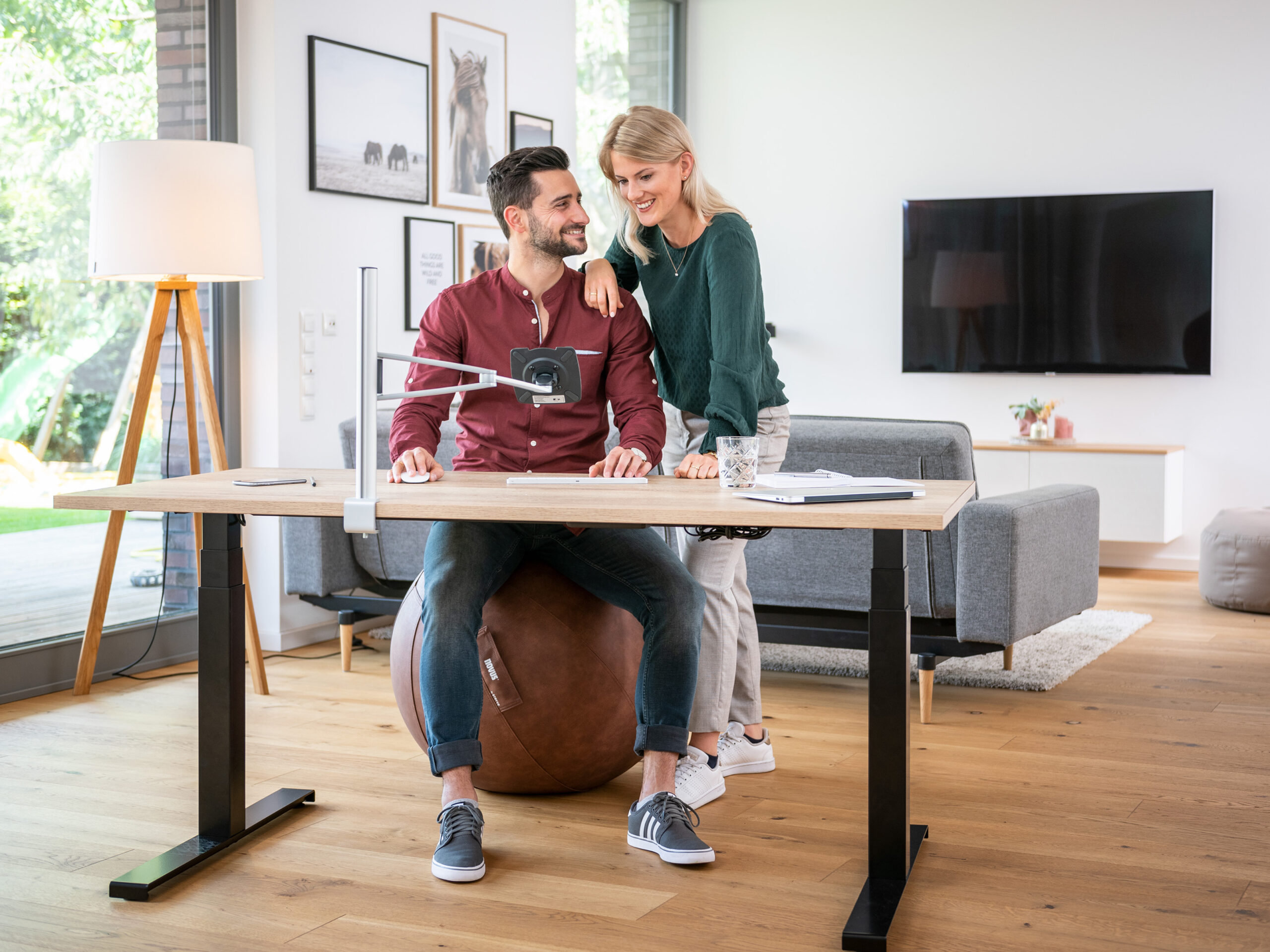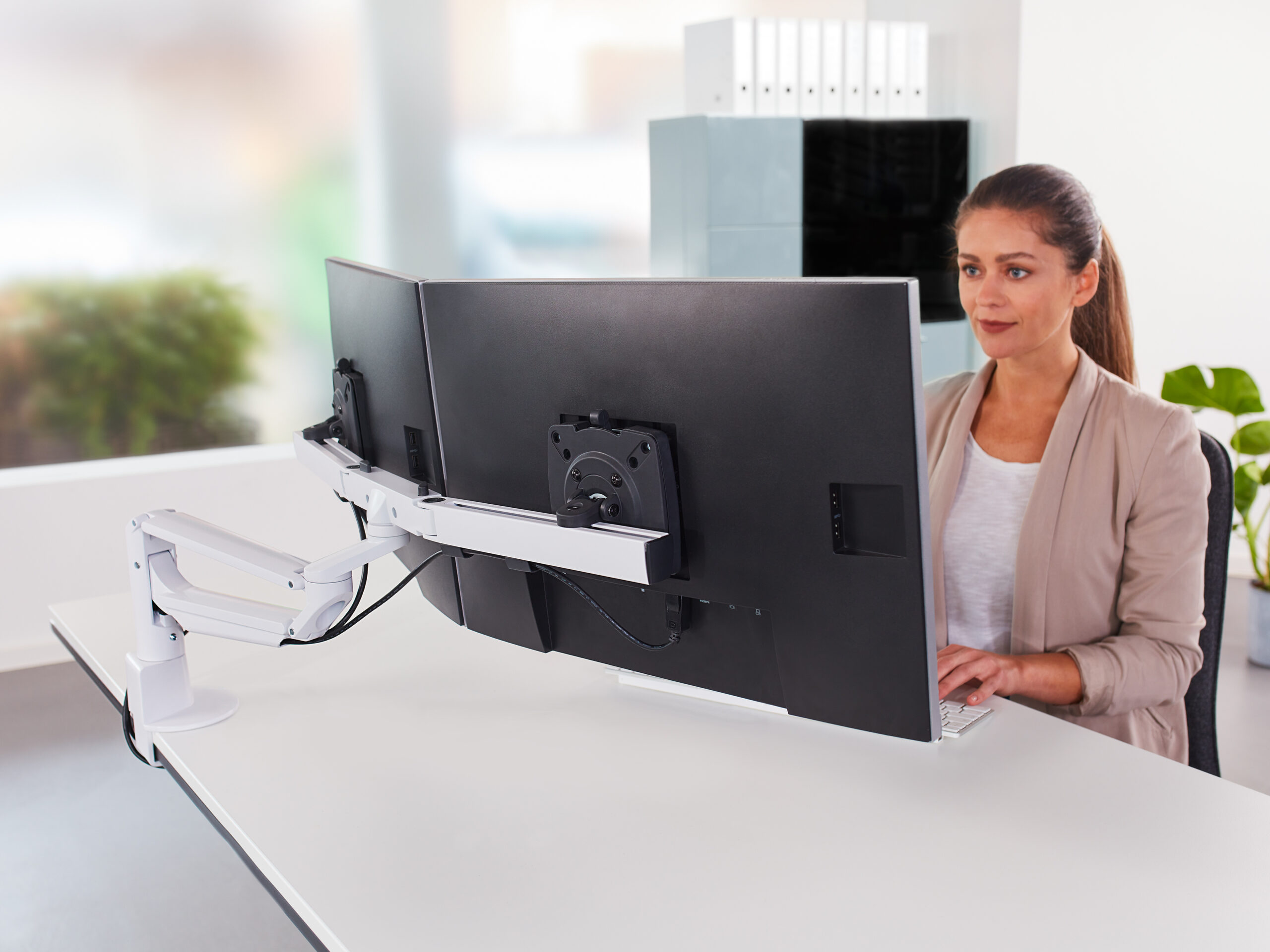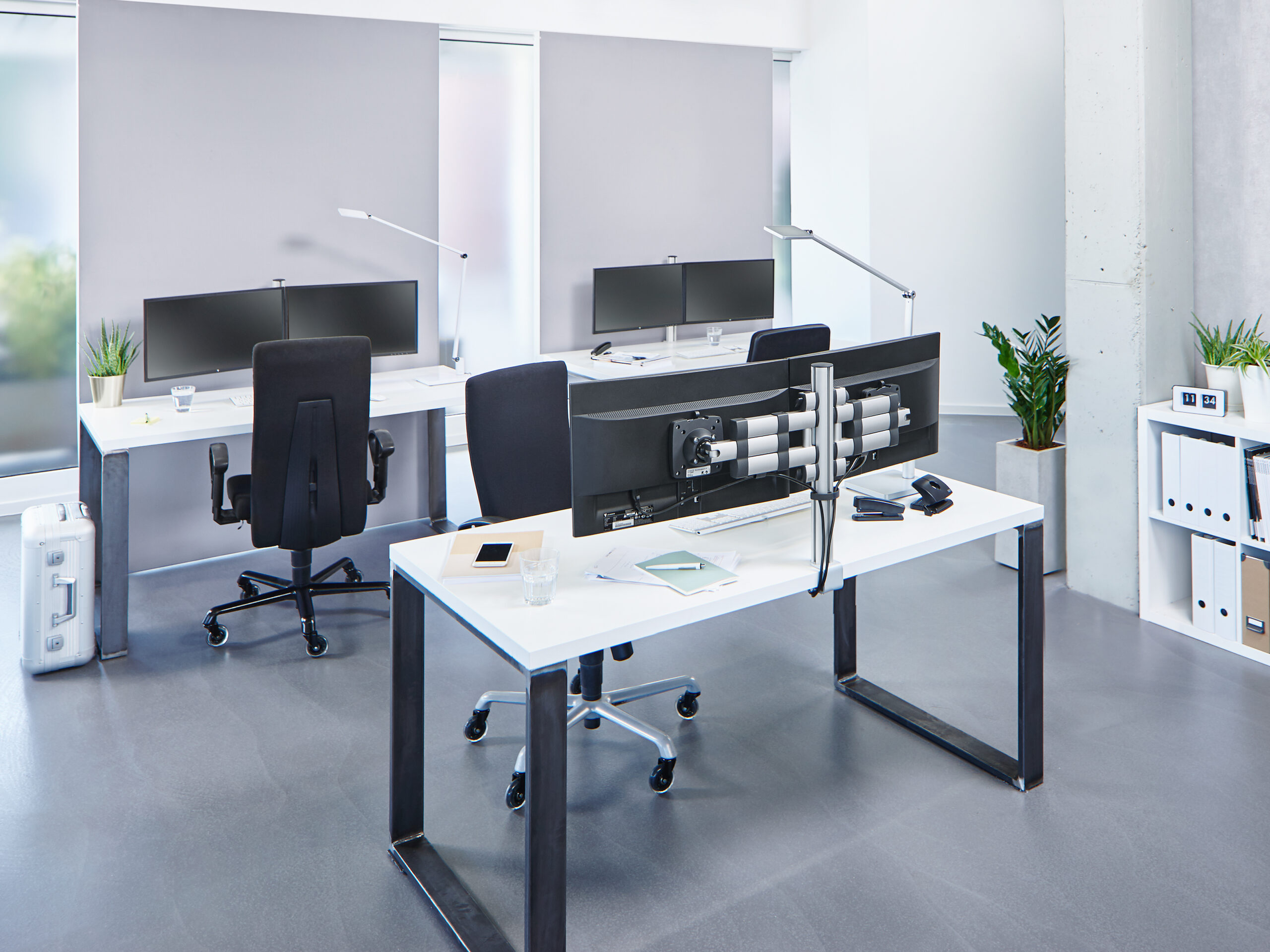Clever workspace solutions
Novus More Space System
Novus workspace solutions help you work more efficiently and comfortably in offices and control rooms. Our monitor arms, desktop luminaires, notebook holders and filing systems create order and structure on your desk, giving you more space! And the Novus POS Solutions range helps you make your checkout areas more appealing, practical and safe.
Our innovative Novus workspace systems can be flexibly installed on any desk. Height-adjustable mounts for monitors, light and hygiene protection enable users to work more ergonomically, contributing to better health in the workspace.
NOVUS Activity Indicator
Optimises the workflow
Whether in the office or home office – show your availability at work with the NOVUS Activity Indicator.
Novus Activity Indicator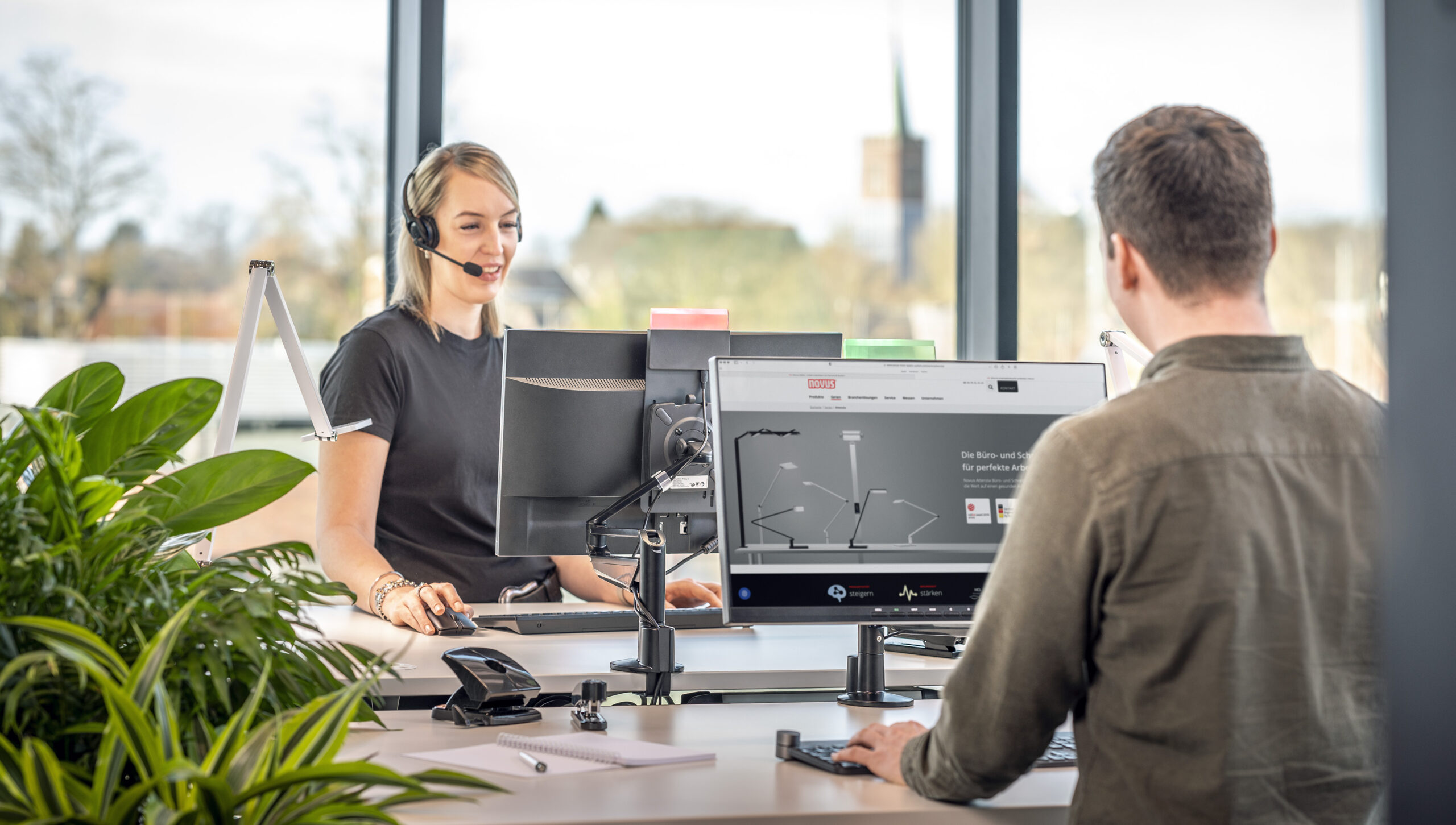

Monitor arms
For more space & ergonomics
Bring your monitor flexibly into the right position: with monitor holders from Novus, we bring the screen into the third level and thus provide more space on the desk. Even several monitors next to each other can be integrated in a space-saving way at the desk with monitor support arms. As part of our multi-user system, our supports can be easily combined with other components from our range.
The options for stepless adjustment also allow you to work in a relaxed manner. They thus help to avoid physical discomfort caused by incorrect posture.
Monitor armsNOVUS MY 2.0
The entry-level range for monitors up to 5 kg provides the ideal solution for your home office.
NOVUS CLU
The all-rounder with gas pressure spring for screens up to 7 kg, enables individual workplace design.
NOVUS CLU PLUS
With this powerhouse, you can easily position two or three screens at the same time.
NOVUS TSS
The Professional Range for heavy screens – especially for technically demanding workplaces.
Office Lights
Symbiosis of design and function
Your eyes can relax. Your head can work better. Modern LEDs in pleasant neutral white increase your ability to concentrate. With its flexibly adjustable articulated arm, Attenzia is designed for ergonomic office work!
Office Lights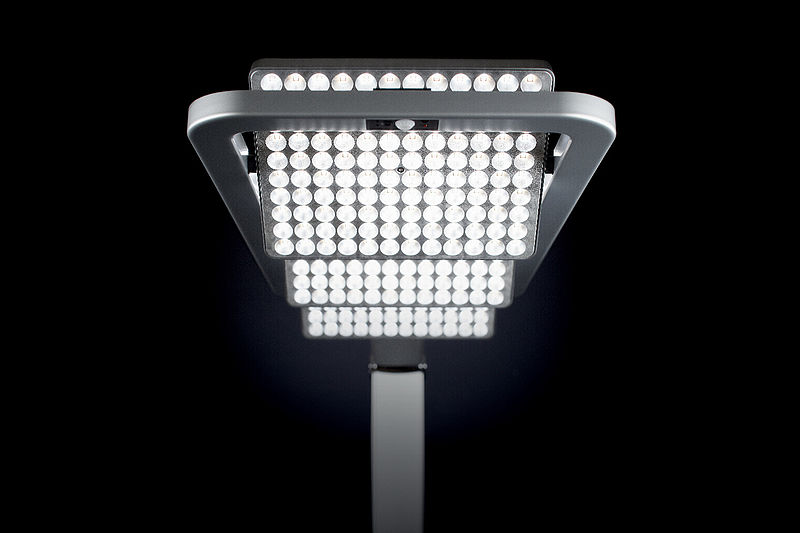
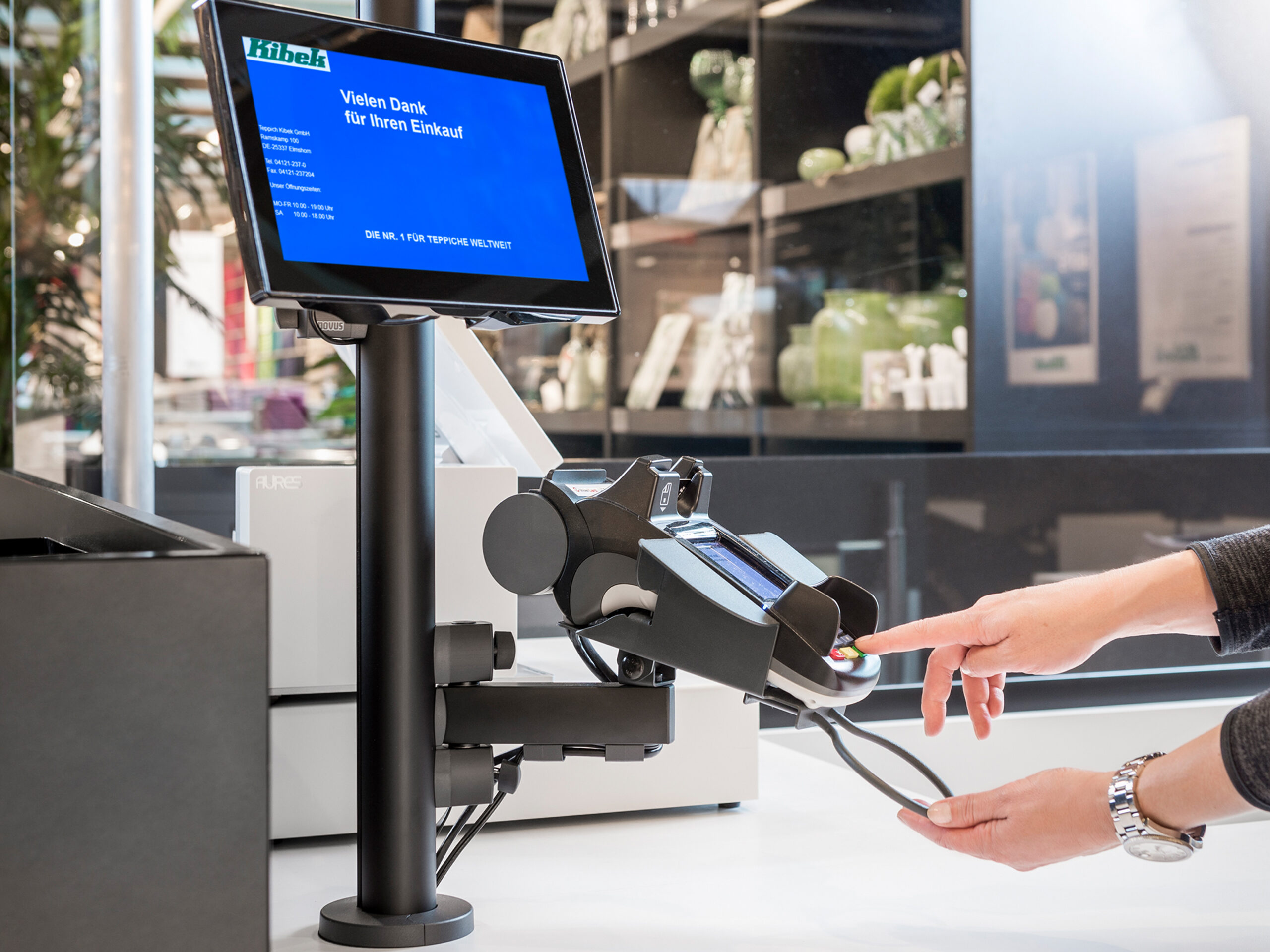
POS Solutions
One system – universal use
Our space-saving, flexible products can be perfectly integrated into the shop design and increase user-friendliness in the checkout area with well thought-out details.
POS Solutions